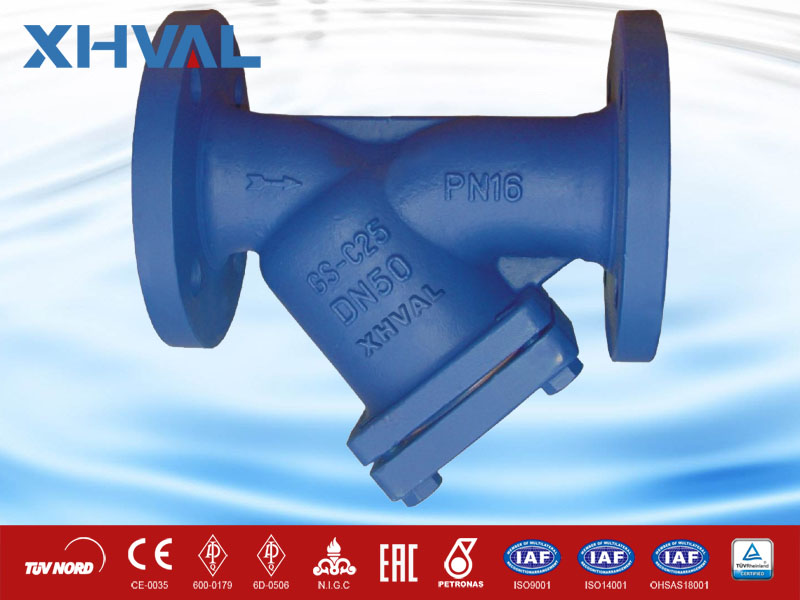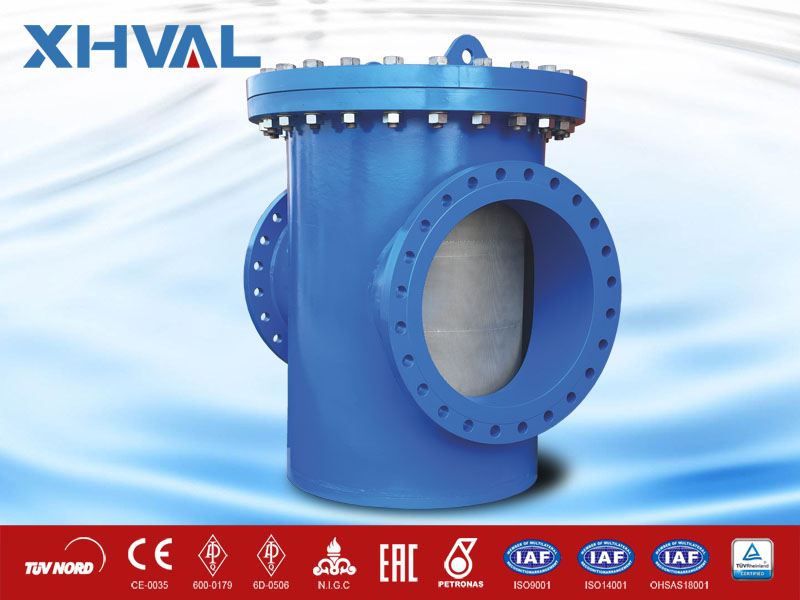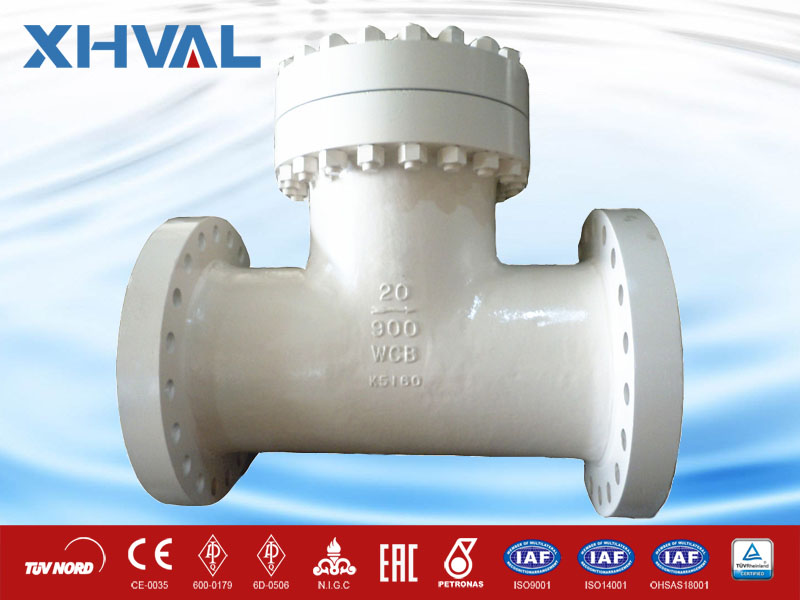Strainer
XHVAL is a pipe strainer manufacturer and supplier that specializes in ANSI Tee Type Strainer, T-Type Strainer, and Basket Strainer. XHVAL customers can choose strainers made from carbon steel (WBB) or stainless steel materials.
Passing the ANSI Standards, XHVAL strainers can withstand 150-lbs pressure ratings. Additionally, XHVAL strainers can either have the flange end or the butt-weld end connections. The bolted cover with drain plug is also another variety the company manufactures.
All You Need to Know About Pipe Strainers
When media consists of thicker particles or when the media is unpurified, pipeline strainers come into play. As the term connotes, strainers sort out the particles from the media for various reasons. Materials such as perforated metal, wedge wire or mesh act as the actual strain.
This article discusses information about pipeline strainers, from its purpose, applications and the different kinds of strainers. Included in this article are techniques in how to choose the right strainer for one’s industrial needs.
What is the Importance of Strainers in the Piping System?
Pipe strainers function in three ways: to purify the media, to separate larger particles from smaller ones or to filter the liquid from solid particles of the flow media. These basically collect particles as the media passes through them.
For the most part, strainers are the first line of defense against damage. Why?
Strainers filter debris that can harm the pipe system. In a way, strainers, reduce malfunction downtime and maintenance. Because harmful particles are already out of the way, other pipe components along the system are protected.
Choosing the right strainer and placing these in the right location protects valves and other piping equipment.
Industrial Strainer Applications
Often, industrial strainers are upstream of valves, compressors, and pumps. These are sensitive equipment that makes the pipe system more dynamic and efficient. Additionally, industrial strainers are effective when the media is heavier or contains contaminants which need filtering.
Specific industries that use strainers are the following:
- Chemical Industry
- Food Industry
- Water Treatment Industry
- Petroleum Industry
How To Select Strainers?
Strainers, like many piping components, can come in different designs and function. These parameters will either make or break the strainer performance.
For instance, an industrial strainer with very small holes can cause premature fouling. This is the accumulation of the substrate or medium on the inner surface of the pipe. This phenomenon can increase the maintenance frequency for pipe cleaning. This can also damage the pipes if left untreated.
Putting in a little effort in identifying what goes with how to select the right strainer ensures better efficiency in the piping process.
What is the flow rate?
Flow rate plays a big role when choosing the right strainer. Flow rates and pressure drops are affecting each other directly. The thicker the media, the tendency is to have a slower flow rate. This also means it has a tendency to have a greater pressure drop.
With this in mind, industrial strainers should consider how much pressure drop is allowable for the application. This is not determined by the size of the pipes. Pressure drop calculators are available online. This can estimate how much pressure drop the strainer has or needed.
For example, if the flow rate is more than 150 GPM, the most ideal strainer would be the basket strainer This has less pressure drop compared to other strainer types.
The standard strainer size should have an initial pressure drop of not more than 2PSIG. It should not have a flow rate of more than 8 FPS (feet per second).
What is Open Area Ratio?
Open Area Ratio (OAR) or Capacity Ratio affects the length of time that the strainer can efficiently operate prior to cleaning. This factor also affects the amount of pressure loss inside the strainer.
Knowing the OAR of the strainer is important because this indicates when the strainer mesh needs cleaning or replacement. A clogged strainer means high-pressure drop. Large OAR means the media has more debris or very viscous.
Here’s the formula to compute the Open Area Ratio,
Open Area Ratio (OAR) = (100 x Mesh Open Area x Screen Area)/ (Internal Cross-Sectional Area)
How much mesh size is required?
The size of the mesh determines the filtering capacity of the strainer. The smaller the mesh, the more it can strain. Take note that the mesh size also has a plus (+) sign or a minus (-) sign.
To find out the mesh size of the screen, count the number of openings in one linear inch. That being said, a 10-mesh screen has 10 holes across that one-inch line.
What the plus sign means is particles with a diameter over that particular number cannot pass through the mesh. A minus sign means particles smaller than that number can pass through. For example, a +400 mesh means particles that have a diameter of 37 microns cannot pass the mesh. A -60 mesh means particles that have a smaller diameter than 250 can pass through.
What is the relationship between pipe orientation and strainer types?
Not all the time that pipe orientations are horizontal. The only possible time that the pipes can be vertical is when the flow is downwards.
That being said, for vertical pipes, the most suitable strainers are the Y-type or the tee-type basket strainer. However, the Y strainer must have its screen face downwards. This is to trap the sediments easily and to ensure that the debris won’t return upstream.
On the other hand, basket strainers, in general, are better choices for horizontal or slightly inclined pipes. One catch, however, is that the strainer is at the lowest possible position to allow easier flushing out of the debris.
What Are the Types of Strainers?
Similar to the valves, classifications of strainers depend on several factors. In this article we will introduce four main groups of strainers:
- Y-Type Strainer
- Basket Type Strainer
- Special Application Strainers
- Temporary Strainers
Y-Type Strainer
The Y-type strainer is better in conditions where there are little solid particles to be separated from the media. This type of strainer is more effective when frequent maintenance is not an issue. Installation for this type of strainer can be in both vertical and horizontal orientations. Most of the applications for the Y-Type strainer are those that exceed 6000 PSI.
The vertical orientation is much more suitable when the pipes are also in the vertical position. The name came from the design of the strainer.
It has a drain pipe placed diagonally, apart from the two openings. This is where the debris goes, stored and eventually released.
When installed horizontally, the drain or the pocket must be in the horizontal plane to avoid erosion. Horizontal installations of the Y-type strainer happens when the media is steam or gas; otherwise, the orientation is vertical.
The Y-type strainer cannot hold large amounts of dirt and debris. Because of this, the Y-type needs to be cleaned more frequently compared to other types.
Where Can You Typically See a Y-Type Strainer?
A Y-type strainer is useful in gaseous applications such as steam, air and natural gas.
Basket Type
Basket Strainers are the complete opposite for Y-type strainers. Media with large particulates and those pipes that need frequent cleaning can benefit quite well with this type. Applications for basket strainers do not often exceed 1,500 PSI.
Otherwise known as the Tee-type, T-type or the pot type, this strainer has a lower pressure drop compared with the Y-type. The former has a larger straining area compared to the Y-type. Another advantage of basket strainer is it can hold larger amounts of debris.
Where Can You Typically See a Basket Strainer?
This type of strainer is useful for industrial water applications and combustion oil for boilers.
Duplex/ Twin Strainers
This is a special type of basket strainer. When operations are continuous and cleaning is impossible during operations, duplex basket strainers are the best options.
There are two filters so when one is full, the operation transfers to the other basket, ensuring a continuous process and the other basket is cleaned up or replaced.
This strainer contains a plug-type valve or a ball-type valve. These allow the diversion of the flow from one basket to another
Applications for this type include:
- Lubricating lines on ships
- Water intake and service lines
- Cooling towers
- Applications that need continuous operations
What Are Some Special Application Strainers?
There are applications that require special kinds of strainers because of the requirements of the media or the pipe system itself.
High Differential Strainers
High differential strainers are more efficient when there is extremely high pressure. Heavy wire mesh or welded mesh screens make this strainer withstand extremely high pressure.
High Capacity Basket Strainers
These specialized basket strainers have fine straining capacity and with a large basket. Such a design reduces clogging of the strainer when the media is thick and highly viscous.
Jacketed Strainers
Specialized processes may need strainer housing made with fabricated or cast metal. This extra housing add more support to the strainer. It also maintains the temperature of the media when it needs to be above the ambient temperatures.
Magnetic Strainers
Magnetic strainers are efficient in reducing premature damage to pump seals. The magnets create a magnetic field that attracts iron particles. These iron particles make pumps rusty, hence the damage.
Micronic Strainers
Micronic strainers have a very fine mesh that can remove particles as small as 5 microns. Applications such as separation of water from gasoline use this kind of strainer.
Offset Strainers
When pumps that are oriented close to the ground need strainers, an offset type is more effective. This strainer has a high inlet and low outlet. There is less chance of contamination even though the pump near the ground.
Reducing Strainers
Reducing strainers eliminate the need for a reducer. Such strainers can already reduce pressure loss caused by the downsizing of the pipeline size.
What Are Temporary Strainers?
When there are budget constraints, temporary strainers are the cheaper alternatives. The placement of these strainers is between pipe flanges. With a simple design, temporary strainers come in three types.
- Conical
- Truncated
- Flat
These types of strainers often have a much lower opening position than the basket type. Additionally, it can be labor-intensive to remove, maintain or clean these for it includes disassembly of the pipeline. Lastly, there is a tendency for the strainer to deform due to the surge of the media passing.
What Are the Common Strainer Materials?
There are five common materials for piping strainers:
Cast Iron
This is the most common material because it is cheap to source. Valve users employ this when the application requires low pressure and temperature.
Bronze
Bronze is more common when the media is salty water.
Carbon Steel
Carbon steel is the more suitable material when the services require high pressure and temperature or when there is a thread of fire.
Stainless Steel
Stainless steel is more common in applications where corrosion is a great factor.
Plastic
Plastic strainers are better when there is very low pressure and temperature.
What Are the Common End Connections for Strainers?
Strainer end connections are important because these must adapt to the kind of connections the pipe system has. Iron strainers often have threaded or flanged ends. But, other strainer kinds can have one of the end connections mentioned below:
- Threaded
- Flanged
- Weld Ends
- Special Ends
What Are the Types of Screens Used in Piping Strainers?
Piping strainers have two types of screens:
Perforated Screen
Perforated screens are for general use. Its straining range is from 0.8mm to 3.2mm. Perforated screens are made from a flat material that has been punched to create holes. The next step is to roll the material into a tube and connect the two ends together.
Mesh Screen
Mesh screens come from fine wires layered on top of a perforated screen. Mesh type can filter finer particles as small as 0.07 mm.
What Is the Difference between Filters and Strainers?
Some might think that filters and strainers are the same. On the contrary, in the industrial application sense, filters are encompassing. Making sense of it, a strainer is a type of filter.
A filter is simply for separation of particles. The filter is mainly to protect the downstream devices such as valves from particulates of the passing media.
Filters have the capacity to separate particles as small as 1 micrometer. On the other hand, strainers can only strain larger particles from liquid or gas.
Filters and strainers include a replaceable device that removes particles. One distinct difference between the two is the straining device in strainers are reusable several times; in filters, the straining device is for one-time use.
In Summary
The role of strainers in the piping system cannot be denied. While its design may be simple, choosing the best kind for the piping system requires meticulous considerations.
Request A free quote
We'd like to work with you
- +86 577 5768 9696
- +86 577 5768 7951
- [email protected]



